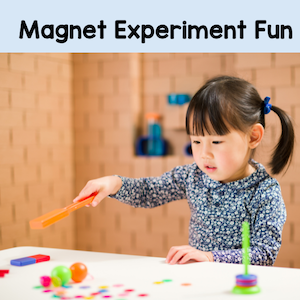|
Kids are full of questions. Why is the sky blue? What are you doing? How does that work? It can be exhausting sometimes to keep answering them, but it is exciting to see the wonder and awe when they see new things. Science activities are a great way to capture that wonder and seek answers. Doing experiments is fun and can answer many of those questions. Creating experiments using the scientific method helps students to think through the necessary steps for controlling the parts of an experiment so that they can repeat when necessary to test out different hypotheses.
It is important to have a question to answer before starting an experiment. Once you get your question, you can then make an educated guess or hypothesis about the outcome. This will help you to decide on the procedure and the materials needed to try to test out what you think might happen. Here are some fun questions to ponder and maybe create experiments for. • Is there a way to drop an egg from the roof without breaking it? • How does a string telephone work? • How do large boats keep from sinking? • How can you make an egg bouncy? • How do airplanes stay in the sky? • How is electricity made? • How do magnets work? Let's take a look at an experiment or activity that can be done to learn more about magnets. The objective of this experiment is to introduce primary children to the concept of magnets and their ability to attract certain materials. This hands-on activity combines learning with a fun scavenger hunt to engage and excite young learners. Question and HypothesesQuestion: Why do magnets pick up or stick to some materials, but not others? Ask students this question and get them to give you their hypotheses (These are their best guesses.) Materials NeededMaterials needed: - Small magnets (bar magnets or magnetic wands - Various objects made of different materials (paperclips, plastic toys, coins, aluminum foil, wooden blocks, corks, toy cars, etc. - Small containers or bags - Labels or cards with pictures of objects to find - Object checklist - Recording sheet - Pencil for recording Material PreparationPrepare small containers or bags with labels or cards featuring pictures of the objects to find. Attach the object checklist to the containers. Scatter a variety of objects made of different materials around the room or outdoor areas. Hide some of the objects if possible. ProcedureGive each child a recording sheet, a magnet and a container or bag with labels or pictures of the objects. Attach a list to each container. Explain that their mission is to use the magnet to find objects around the room and record whether or not they are attracted to the magnet. ObservationsEncourage the children to use their magnets to explore and observe which objects are attracted to the magnets. Have them record their observations on the recording sheet and check off the objects they find on their list. Results And DiscussionGather the children together to discuss their findings. Ask questions such as: - What objects did you find? - Were there any objects that the magnet didn't attract? - Were some objects easier to find than others? Check out the recording sheet and how the children classified the objects they found into the two categories: attracted to the magnet and not attracted to the magnet. ConclusionConclude the experiment by reinforcing the idea that magnets have special powers and can attract certain materials. Introduce the concept that magnets attract objects made of certain materials, such as iron and steel. Check the hypotheses and see if they were correct or not and discuss why or why not based on what they discovered. Extension Or Follow Up ExperimentExplain that magnets have special powers to attract certain materials and that they have a north pole and a south pole. Create an experiment and opportunity for children to test out magnets and their poles to see how they can attract or repel based on which poles are facing each other. This is just one example of how to capture wonder and excitement using the scientific method and experiments. There are so many different experiments to try. Enjoy exploring the world around with your students as they discover new and amazing things. Related PostsComments are closed.
|
About Me Charlene Sequeira
I am a wife, mother of 4, grandmother of 9, and a retired primary and music teacher. I love working with kids and continue to volunteer at school and teach ukulele. Categories
All
|

















 RSS Feed
RSS Feed